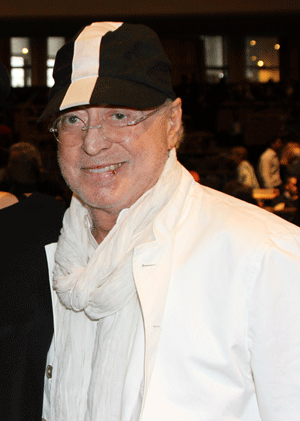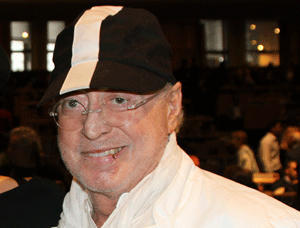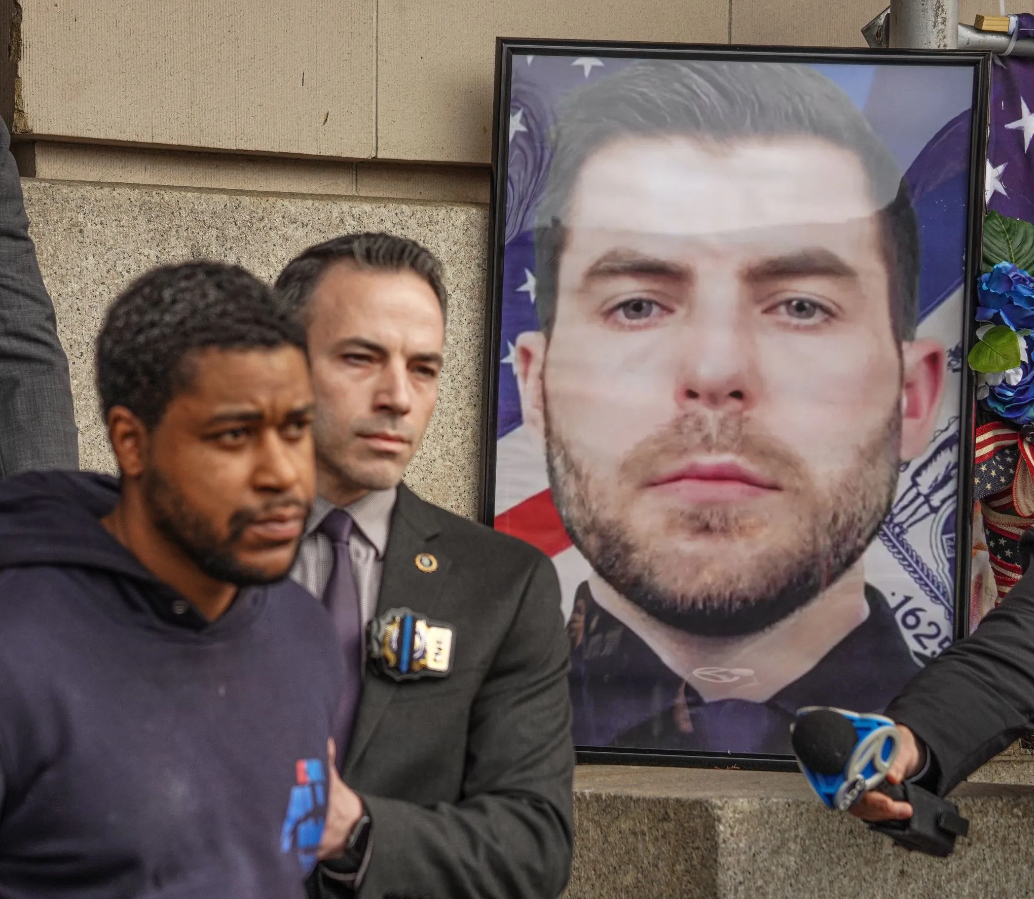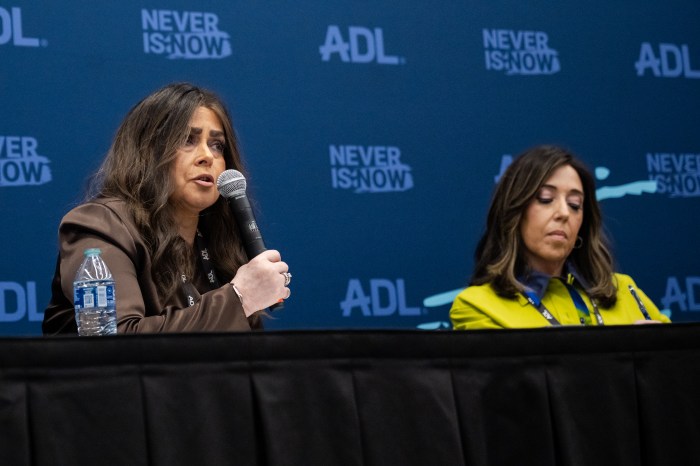
Tony Goldman.
BY GARY SHAPIRO | Tony Goldman, a developer with a knack for resuscitating urban neighborhoods, died on Sept. 11. He was 68.
Where others saw dilapidated buildings, Goldman envisioned busy clubs, art galleries, and hotels. Soho, Miami’s South Beach and Philadelphia were all beneficiaries of his touch.
“He had a keen eye for preservation,” said Sean Sweeney, director of the Soho Alliance community organization. “He restored rundown buildings to their original glory. He did not simply tear buildings down and put up ugly ones in their place.”
Author and scholar Anthony C. Wood said Goldman understood that preservation made good business sense.
In the 1970s, Goldman was one of those whose gaze alighted upon the lofts and cast-iron buildings in Soho and saw potential for boutiques, restaurants and retail stores.
As with real estate, he kept his ear to the ground for talented artists.
Jeffrey Deitch, now the director of the Museum of Contemporary Art in Los Angeles, recalled how Goldman was open to his idea for reusing a wall on Goldman’s property, which has gone on to become a major urban “art wall.”
“During one of Tony’s visits to my gallery, I was talking about my interest in re-creating Keith Haring’s famous Houston St. and Bowery mural on the 50th anniversary of his birth,” he said. “I told Tony how great it would be if we could get access to that strange, distended section of wall on the northwest corner of Houston and Bowery and repaint Keith’s mural using the new digital technology.”
Deitch continued, “To my astonishment Tony answered, ‘I own that wall!’”
The project garnered acclaim, and the pair made the wall an ongoing endeavor. They went on to enlist the skills of the best street artists around. Since reviving the Keith Haring mural, the collaborative project has drawn on the talent of Kenny Scharf, Shepard Fairey, JR, Barry McGee, RETNA, Os Gemeos, AIKO and others.
Marlo Courtney, managing director of Goldman Properties in Miami, said it gave Goldman great pleasure to know the Houston St. wall has touched untold thousands who have seen it.
“He married art and architecture and infused his love of art into his buildings,” said Courtney, a close friend who worked with Goldman since 1982 and knew him even longer.
In the 1980s, Goldman put into the sidewalk in front of his headquarters at 110 Greene St. a replica of the Manhattan subway lines, taken from the M.T.A. map.
“The subway lines were thin metal bands and the stations were represented by glass lenses like what is found on the steel plates in front of many Soho buildings,” Sweeney said.
In a Noho project at 25 Bond St., Goldman had Japanese artist Ken Hiratsuka etch nonrepresentation designs into the stone sidewalk.
Not all of Goldman’s projects were greeted with favor. Members of the Soho Artists Association filed a complaint with the city Board of Standards and Appeals about Goldman’s breaking down the partition wall between two separate buildings that he owned in order to try to combine them to have restaurant floor space larger than what zoning allowed.
Sometimes feathers were ruffled over noise. Photographer Bonnie Lynn said Spy Bar at 101 Greene St., popular with celebrities, was “a mess” for the neighborhood. When Goldman proposed the idea of putting a bar on top of 110 Greene St., Lynn recalled exclaiming at a large community meeting, “Do you want to have a Spy in the sky?”
Sweeney of the Soho Alliance said he was taken aback by the proposal to have the British-imported Soho House on Greene St. When one Englishman told him his establishment overseas attracted the most important people in British theater and letters, Sweeney recalled saying: “I don’t care who you have as clientele. You can have the pope as one of your members, but when the pope gets out of the popemobile at 3 a.m. in the morning, and a taxi driver behind him starts honking, I’m the one who’s going to be awakened.”
Soho House left New York’s Soho behind and planted itself in the Meatpacking District instead.
Goldman’s Greene Street Cafe, a jazz supper club that opened in 1979, was well received. So was Soho Kitchen and Bar, at 103 Greene St., opened in 1984, which drew praise for its myriad varieties of wines offered by the glass. One Soho resident believed Goldman offered bar tabs to some artists to pay at least in part for artwork.
The developer collaborated with the neighborhood on various matters. Several years ago, he worked with the Soho Alliance in defeating a proposal by the Department of Transportation to have a pedestrian mall on Prince St.
In the Wall St. area, Goldman opened the Wall Street Kitchen & Bar in 1997 in the American Bank Note Building, and opened the Stone Street Tavern in 2002.
As with cast-iron structures in Soho, Goldman saw the potential for Art Deco buildings in Miami’s South Beach area, after a trip there in 1985. Considering it the “American Riviera,” the developer and hotelier bought 18 buildings, one per month. Among the properties he restored included the Park Central Hotel, one of the tallest buildings on Ocean Drive, originally built in 1937. More than a decade later, Goldman reopened the Hotel of South Beach, formerly known as the Tiffany Hotel, on which he collaborated with Todd Oldham, the fashion designer.
Goldman more recently focused on the Wynwood area across the bay in Miami with its abundant warehouse space. Deitch and Goldman again artistically collaborated there.
“Goldman became one of the most important patrons of street art,” Deitch said. “We came up with the concept of an outdoor museum of street art.”
Goldman labeled it Wynwood Walls, a project that currently displays 20 or more wall paintings by leading artists.
“He invested in lighting, wall preparation and landscaping to enhance the visitor experience and to support the artists to achieve their vision,” Deitch said. Goldman continued the popular project.
Gallerist Kathy Grayson, who curated the 2010 expansion of Wynwood Walls, adding four murals, said of Goldman, “I loved his really out-there outfits, crazy cowboy hats, rainbow berets, all kinds of awesome accessories.” She said Goldman enjoyed interacting with street artists, who are “often are the first colonizers revitalizing neighborhoods.”
In 2008, his son, Joey Goldman, started an Italian restaurant called Joey’s in the Wynwood Arts District. The elder Goldman used to say, “Feed the neighborhood, and the neighborhood will feed you.”
Goldman grew up on Manhattan’s Upper East Side. He graduated from Emerson College in Boston, and began his company in 1968 with one sole employee. He met his wife, Janet, at college. She currently owns a company called Fragments, which sells fine accessories and jewelry.
What is Goldman’s legacy in Soho? Roberta Brandes Gratz, author of “The Battle For Gotham: New York in the Shadow of Robert Moses and Jane Jacobs,” may have said it best: “Tony Goldman was a rare developer who cared about the neighborhood he developed.” She added that he “appreciated the value of existing buildings and never tried to develop in a way that overwhelmed the organic context.”
Goldman’s work was recognized with the Louise Du Pont Crowninshield Award, the top honor given by the National Trust for Historic Preservation.
Until this March, William Leroy ran Billy’s Antiques & Props under a green tarp at 76 Houston St., a store under previous ownership named Lot 76. Goldman didn’t care to see the credit report Leroy brought along for Goldman to review when Leroy was taking over the business. Instead, according to Leroy, the developer looked him in the eye and said, “I’ve got a good feeling about you,” saying that he just pay the rent on time and “you’re in.”
“He was anything but your typical landlord. He was the kind of guy you could approach with crazy and fun ideas,” Leroy said. Goldman surprised Leroy by paying for the premiere of “Dirty Old Town,” a dark comedy based on Leroy’s store, held at the nearby Landmark Sunshine Cinema. In March, Goldman also payed for an unusual closing party for the antiques tent, which ended with punk rock bands, a casket and a funeral.
Leroy said he went and finally took down the iconic sign to his antiques tent this Sept. 11, only learning later that Goldman had died that same date.
Upstairs at Greene Street was the name of the entertainment and cabaret room that was an extension of Goldman’s Greene Street Cafe. It featured the likes of Chris Rock, Joy Behar, Dennis Leary, Tina Fabrique, David Peaston and many others.
Goldman was not averse to taking the microphone himself and singing for the audience. He therefore not only lent his time and experience to the area, but his voice as well.
In addition to his wife and son, he is survived by a daughter, Jessica Goldman Srebnick, a brother, Mark Goldman, a sister, Pam Skerker, and four grandchildren.


















